Liane Makatura
MetaGen: A DSL, Database, and Benchmark for VLM-Assisted Metamaterial Generation
Aug 25, 2025Abstract:Metamaterials are micro-architected structures whose geometry imparts highly tunable-often counter-intuitive-bulk properties. Yet their design is difficult because of geometric complexity and a non-trivial mapping from architecture to behaviour. We address these challenges with three complementary contributions. (i) MetaDSL: a compact, semantically rich domain-specific language that captures diverse metamaterial designs in a form that is both human-readable and machine-parsable. (ii) MetaDB: a curated repository of more than 150,000 parameterized MetaDSL programs together with their derivatives-three-dimensional geometry, multi-view renderings, and simulated elastic properties. (iii) MetaBench: benchmark suites that test three core capabilities of vision-language metamaterial assistants-structure reconstruction, property-driven inverse design, and performance prediction. We establish baselines by fine-tuning state-of-the-art vision-language models and deploy an omni-model within an interactive, CAD-like interface. Case studies show that our framework provides a strong first step toward integrated design and understanding of structure-representation-property relationships.
How Can Large Language Models Help Humans in Design and Manufacturing?
Jul 25, 2023Abstract:The advancement of Large Language Models (LLMs), including GPT-4, provides exciting new opportunities for generative design. We investigate the application of this tool across the entire design and manufacturing workflow. Specifically, we scrutinize the utility of LLMs in tasks such as: converting a text-based prompt into a design specification, transforming a design into manufacturing instructions, producing a design space and design variations, computing the performance of a design, and searching for designs predicated on performance. Through a series of examples, we highlight both the benefits and the limitations of the current LLMs. By exposing these limitations, we aspire to catalyze the continued improvement and progression of these models.
Polygrammar: Grammar for Digital Polymer Representation and Generation
May 05, 2021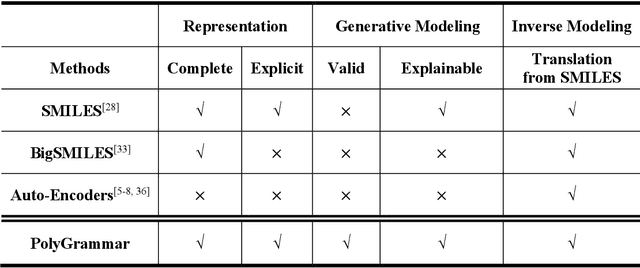
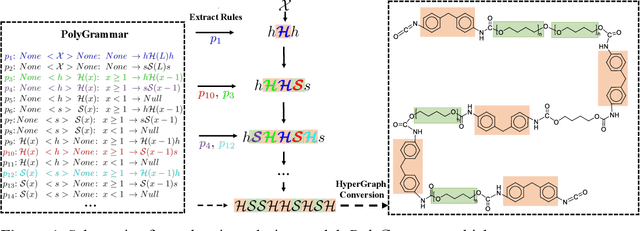
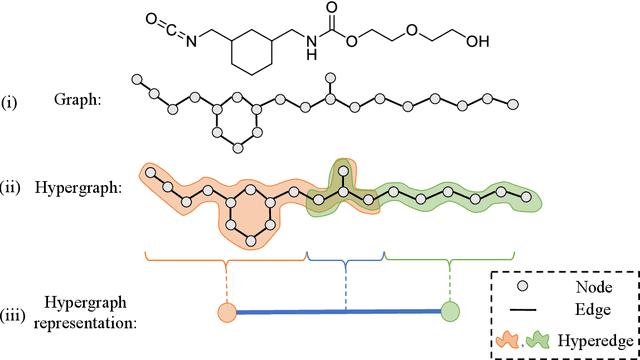
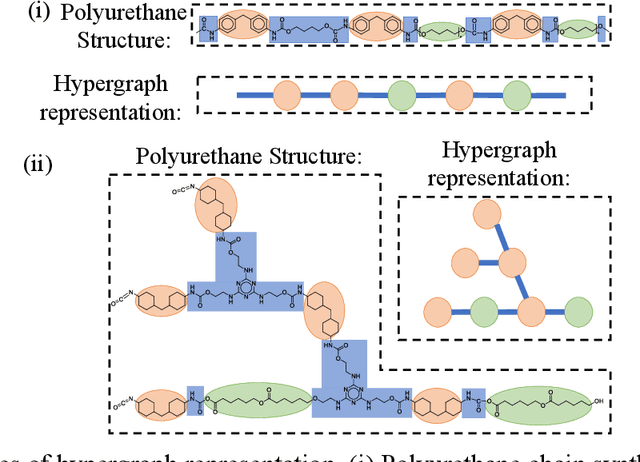
Abstract:Polymers are widely-studied materials with diverse properties and applications determined by different molecular structures. It is essential to represent these structures clearly and explore the full space of achievable chemical designs. However, existing approaches are unable to offer comprehensive design models for polymers because of their inherent scale and structural complexity. Here, we present a parametric, context-sensitive grammar designed specifically for the representation and generation of polymers. As a demonstrative example, we implement our grammar for polyurethanes. Using our symbolic hypergraph representation and 14 simple production rules, our PolyGrammar is able to represent and generate all valid polyurethane structures. We also present an algorithm to translate any polyurethane structure from the popular SMILES string format into our PolyGrammar representation. We test the representative power of PolyGrammar by translating a dataset of over 600 polyurethane samples collected from literature. Furthermore, we show that PolyGrammar can be easily extended to the other copolymers and homopolymers such as polyacrylates. By offering a complete, explicit representation scheme and an explainable generative model with validity guarantees, our PolyGrammar takes an important step toward a more comprehensive and practical system for polymer discovery and exploration. As the first bridge between formal languages and chemistry, PolyGrammar also serves as a critical blueprint to inform the design of similar grammars for other chemistries, including organic and inorganic molecules.
Neural Inverse Knitting: From Images to Manufacturing Instructions
Feb 07, 2019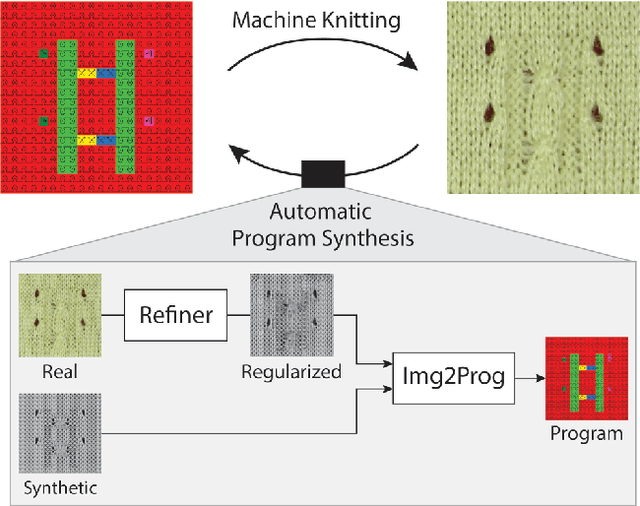
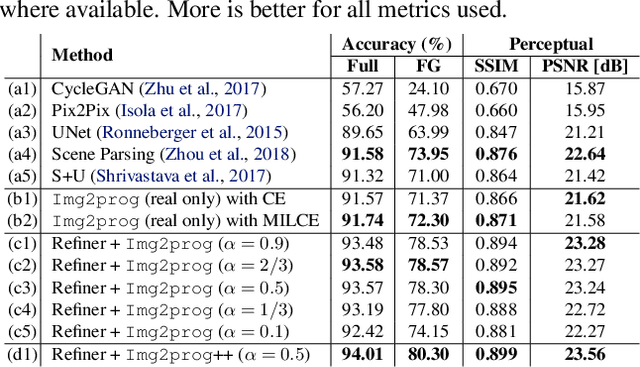

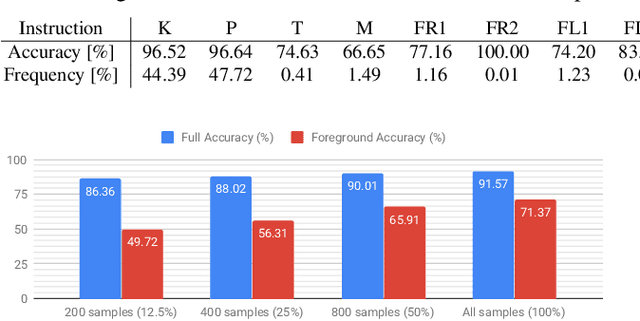
Abstract:Motivated by the recent potential of mass customization brought by whole-garment knitting machines, we introduce the new problem of automatic machine instruction generation using a single image of the desired physical product, which we apply to machine knitting. We propose to tackle this problem by directly learning to synthesize regular machine instructions from real images. We create a cured dataset of real samples with their instruction counterpart and propose to use synthetic images to augment it in a novel way. We theoretically motivate our data mixing framework and show empirical results suggesting that making real images look more synthetic is beneficial in our problem setup.
 Add to Chrome
Add to Chrome Add to Firefox
Add to Firefox Add to Edge
Add to Edge